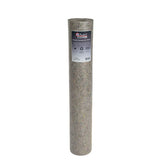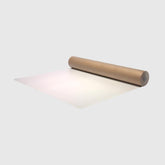How to install draft strips for doors: a simple guide
Simple, yet extremely effective draft excluders for doors Weatherstripping is a huge improvement for both your home and your energy bill. Even the smallest gaps around doors can cause significant heat loss in winter. Cold air seeps in and warm air escapes. As a result, your heating system has to work harder, impacting your energy bill. By sealing, a weatherstripping system blocks these unwanted airflows, keeping your interior warmer and more comfortable. Besides saving energy, they also offer benefits such as reducing noise and preventing dust and insect intrusion. Installing a weatherstripping system is an inexpensive, easy DIY project that will immediately pay for itself with visible results in your living room.
Why use a draft excluder?
Draft excluders for doors Draft excluders are a simple yet surprisingly effective way to improve home comfort and lower your energy bills. Small gaps around doors can contribute to significant heat loss in winter, as cold air enters and warm air escapes. This forces your heating system to work harder, directly impacting your energy bill. By creating a seal, draft excluders block these unwanted airflows, keeping your interior warmer and more comfortable at all times. Besides energy savings, they also offer benefits such as minimizing noise pollution and preventing dust and insect intrusion. Draft excluders are an inexpensive, easy DIY installation that instantly and visibly improves your living space.
Step-by-step installation guide
The application of draft excluders for doors Weatherstripping is a basic method for improving your home's energy efficiency and comfort level. Start by measuring the width of the bottom of the door to determine the perfect fit between the weatherstrip and the rubber seal, and choose your adhesive strip options. The door surface should be thoroughly cleaned to remove dust and dirt before applying the adhesive strip for optimal adhesion. The necessary cut for your weatherstripping should be made precisely with scissors or a hacksaw. Screw strip installation begins with marking the screw positions before drilling holes to securely attach the weatherstripping. The adhesive strip should be removed from the backing before pressing it firmly along the bottom of the door to ensure proper contact. The final step is to check the door's movement after installation to see if the strip is blocking its movement, so you can adjust its position if necessary.
Maintenance tips
Correctly installed draft excluders for doors Play a vital role in maintaining energy efficiency and increasing living comfort. The door frame must be thoroughly cleaned before applying self-adhesive strips to ensure perfect adhesion. When installing weatherstripping with brushes and hinged flaps, measure the dimensions accurately and cut them so that the brush or flap touches the floor and the frame without blocking the door's movement. When installing screw-in weatherstripping, pre-drill holes for secure mounting points. Check all weatherstripping regularly for damage and wear, especially before winter.Check the adhesive strips for signs of cracking, hardening, and poor adhesion. If any component is damaged or doesn't form an airtight seal, it should be replaced immediately to maintain maximum insulation. A basic maintenance routine will help extend their lifespan while maintaining a warm, draft-free living environment.
Conclusion
Installing the draft excluders for doors Draft control is a fundamental method for improving your home's comfort and energy efficiency. The following guide shows you how to address typical drafts, keeping warmth inside during the winter and cool air inside during the summer. The key to a good fit is accurate measurement, followed by the correct selection of draft excluders for each opening, before carefully applying them. Your investment of time and materials will result in significant energy savings and a more comfortable interior.




